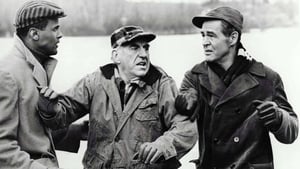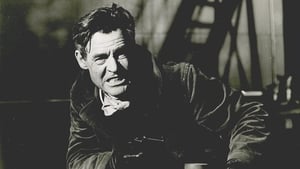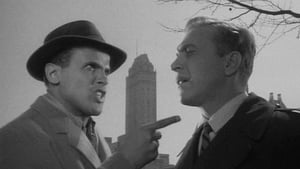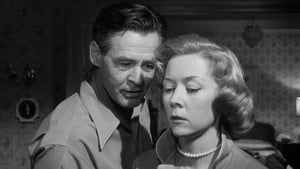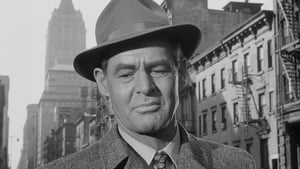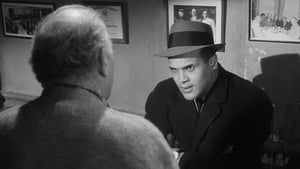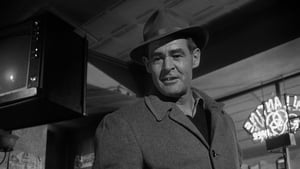Video Sources 0 Views
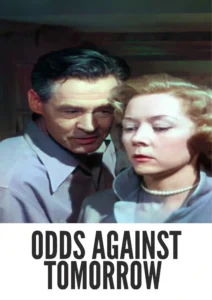
Synopsis

Dive into the tense and racially charged world of Odds Against Tomorrow, a gripping crime noir from 1959, now beautifully colorized for a viewing experience that transcends time. Directed by Robert Wise and headlined by Harry Belafonte, this film serves as both a thrilling heist narrative and a stark examination of the racial prejudices simmering beneath the surface of 1950s America. Ideal for aficionados of classic cinema and those drawn to stories that tackle social issues head-on, this HD download presents a revitalized perspective on a profoundly relevant piece of film history.
Odds Against Tomorrow plunges into the lives of three desperate men entangled in a high-stakes bank robbery scheme. Dave Burke, a disgraced former cop, orchestrates the plan, enlisting the help of Earle Slater, a volatile, racist ex-convict, and Johnny Ingram, a jazz musician ensnared by gambling debts. As the meticulously laid plans begin to unravel, the deep-seated animosity between Slater and Ingram threatens to detonate everything.
As the robbery unfolds, tensions escalate, exposing the raw nerves of racial hatred and mistrust. The film masterfully portrays how prejudice can be as destructive as any external force, leading to a tragic climax where the characters must confront not only the authorities but also their own internal demons. The film culminates in a fiery confrontation, symbolizing the self-destructive nature of hate. Odds Against Tomorrow remains a potent commentary on American society, highlighting the destructive consequences of racism and the common threads of humanity that bind us together, even in the face of overwhelming odds.
The film boasts a powerful cast, each actor delivering a memorable performance:
-
Harry Belafonte as Johnny Ingram
-
Robert Ryan as Earl Slater
-
Shelley Winters as Lorry
-
Ed Begley as David Burke
-
Gloria Grahame as Helen
Odds Against Tomorrow masterfully blends elements of crime noir, social commentary, and suspense, creating a viewing experience that is as thought-provoking as it is thrilling. Its unflinching examination of racial tensions sets it apart, solidifying its place as a landmark film in the genre.
Released in 1959, Odds Against Tomorrow arrived at a pivotal moment in American history, amidst the burgeoning Civil Rights Movement. The film dared to confront the pervasive racism of the era, making it a groundbreaking work of social commentary. Produced during the later years of film noir, Odds Against Tomorrow infused the genre’s characteristic darkness and moral ambiguity with pressing social issues, pushing the boundaries of what could be explored on screen.
This colorized version of Odds Against Tomorrow has been painstakingly restored, employing state-of-the-art digital techniques to breathe new life into the visuals while preserving the original film’s gritty atmosphere. The colorization process involved meticulous analysis of the grayscale tones in the original black and white footage, carefully assigning colors to enhance the emotional impact of each scene. This meticulous process enriches the characters and settings, making the narrative even more captivating for contemporary audiences.
-
: Robert Wise
-
: Abraham Polonsky (credited as John O. Killens)
-
: the novel by William P. McGivern
-
: Joseph C. Brun
-
: Dede Allen
-
: HarBel Productions
-
: United Artists
-
: 96 minutes
-
: MP4
-
: HD (1080p)
-
: Compatible with most devices, including smartphones, tablets, computers, and smart TVs.
Odds Against Tomorrow (1959) has garnered acclaim for its bold exploration of racial prejudice and its gripping heist narrative. Critics have lauded the film’s powerful performances, taut direction, and its unflinching portrayal of social issues. It remains a significant work in both the film noir genre and in the history of socially conscious cinema.
The movie Odds Against Tomorrow is also known under these titles:
-
The Big Odds
-
La Course Contre L’Inconnu
-
: What is Odds Against Tomorrow about?
-
A: Odds Against Tomorrow is a crime noir that delves into the racial tensions and mistrust that plague a group of men planning a bank robbery.
-
-
: Why is Odds Against Tomorrow considered an important film?
-
A: Odds Against Tomorrow is notable for its courageous exploration of racism and its impact on individuals and society.
-
-
: Is this version of Odds Against Tomorrow colorized?
-
A: Yes, this version has been professionally colorized to enhance the viewing experience.
-
-
: What makes Odds Against Tomorrow relevant today?
-
A: Odds Against Tomorrow‘s themes of prejudice and social inequality continue to resonate, making it a powerful and timely film.
-
-
: What is the download format?
-
A: The download format is MP4, which is compatible with most devices.
-
-
: What resolution is the download?
-
A: The resolution is HD (1080p), providing a high-quality viewing experience.
-
Watch Odds Against Tomorrow Today!
